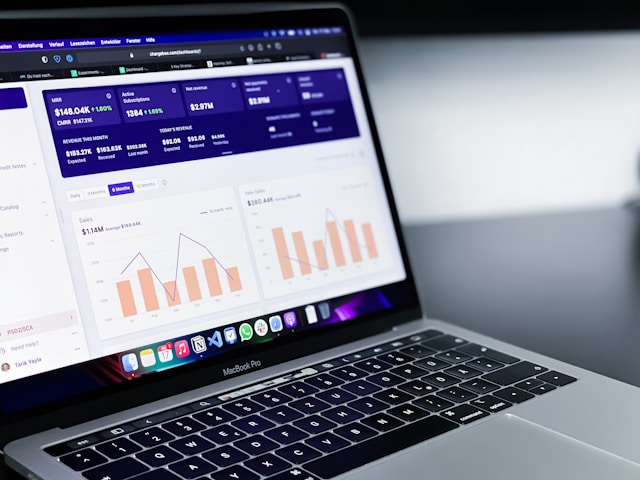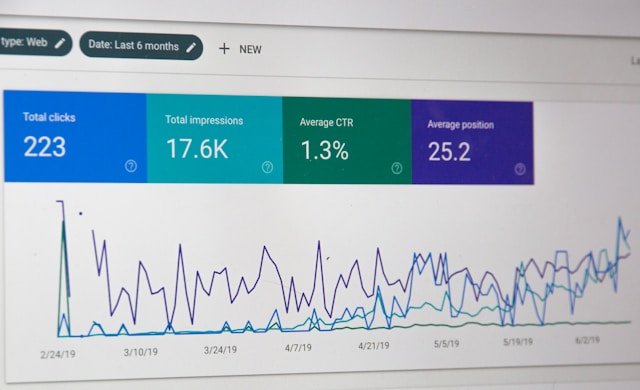Advertising can introduce a business to a potential customer, but it is the website that determines whether that curiosity becomes revenue. When a business increases ad spend before the website is able to convert, the result is rarely more enquiries. The outcome is often wasted budget and the belief that advertising does not work. The problem is not usually the ads. It is that the destination is not ready for the visitor.
The website is the decision point. It must answer questions, remove hesitation and guide the customer towards a confident yes. When the website does not do this well, attention slips away quietly and no one reports the loss. That is why the website matters more than the ads themselves.
Visitors Arrive Ready To Judge
When someone clicks through an ad, they are expressing intent. They already have enough interest to take a step forward. They want to confirm whether the business can help and whether they can trust the result. They have limited patience for obstacles. If the page loads slowly, if information is unclear or if there is no strong reason to take action, the visitor leaves. The business pays for the click but earns nothing.
Visitors do not arrive neutral. They arrive looking for confidence. The website must prove it. Businesses that assume the visitor will dig around to find reassurance misunderstand modern customers. People are busy, competition is fierce and hesitation kills momentum. If the website does not make the visitor feel ready to take the next step, the moment disappears.
Advertising creates opportunity, but the website determines whether that opportunity becomes real.
A Website Can Work Against The Business Without Anyone Noticing
When conversion is low, the business often assumes demand is weak or that the ads require improvement. In truth, even a perfect ad cannot overcome a weak experience. If customers click but do not enquire, the website is quietly damaging revenue potential while appearing to function normally.
There are several silent performance killers:
• Messaging that confuses more than it clarifies
• Missing or outdated proof of success
• Contact options that are hidden or inconvenient
• Overly long forms demanding too much information
• Design that feels outdated and reduces trust
When these issues exist, advertising becomes less effective through no fault of the campaign. The business increases spending to chase results that the website is not prepared to support. Costs rise. Frustration grows. Confidence slides.
A strong website prevents this downward cycle by turning more attention into enquiries.
Marketing Return Depends On Conversion Strength
If a business receives 300 ad clicks in a month and converts one percent into enquiries, that creates three potential customers. Doubling the conversion rate to two percent creates six. The marketing budget remains the same, but the results double. This is a pure performance gain driven by website improvement alone.
Conversion gains compound. Each increase multiplies the effect of future advertising. A business that improves conversion from two percent to five percent more than doubles results again without needing higher ad spend. The financial logic is clear. The website performance influences overall marketing return more directly than campaign quality.
Businesses that focus on conversion first always achieve more with their budget than those that focus solely on traffic.
Trust Is Built On Evidence, Not Claims
The most advanced advertising cannot replace evidence. Visitors want to see results. They want reassurance that others received what they are looking for. Proof demonstrates capability and reduces the risk they feel when choosing a new provider.
Examples of trust builders include:
• Before and after visuals for trades or beauty
• Reviews that demonstrate satisfaction patterns
• Industry relevant certifications
• Clear explanation of the process and outcomes
• Local experience with familiar suburbs or industries
• Photos of real work rather than stock imagery
When proof is present, uncertainty decreases and enquiries rise. Without it, visitors feel they are guessing.
Ads attract attention. Proof converts attention.
Speed, Structure And Clarity Signal Professionalism
If a website takes too long to load or stutters during interactions, visitors assume the business might deliver a similar inconsistent experience. If information is hard to find or expressed unclearly, visitors assume communication might be difficult during the actual job. If the design feels outdated, they assume the service might be too.
Customers interpret digital performance as a reflection of operational quality. That may not be fair, but it is real. Perception shapes choice. The website must therefore demonstrate quality at every moment.
Website strength becomes business strength.
The Website Makes Every Other Channel Better
Search engines track engagement and behaviour. A website that keeps visitors reading and clicking signals relevance. That relevance improves search visibility. Social media traffic performs better when the destination feels credible. Email marketing produces stronger results when links land on pages that support decisions clearly.
Everything becomes easier when the website helps customers make decisions naturally. The improvement is not limited to one channel. It lifts the entire digital ecosystem.
This is why the smartest investment a business can make is into the destination rather than the traffic.
Stability Ensures Growth Instead Of Disruption
Advertising is unpredictable when the website is not stable. A technical error could disable a contact form or cause mobile users to abandon the journey. By the time anyone notices, days or weeks of opportunity may have been lost. The business blames marketing. Customers simply move on.
A website that is actively supported remains ready for growth. The business can run promotions, participate in community events or launch seasonal offers without fear that the digital presence will collapse under pressure. Stability creates confidence. Confidence encourages investment.
Inconsistent performance creates uncertainty. Uncertainty delays growth.
Strategy Works Better Than Short Term Fixes
Some businesses attempt quick fixes when results slow. They rewrite a headline, swap images or increase advertising spend in hope of immediate improvement. Results remain unpredictable because strategy is missing.
A strategic approach evaluates:
• Who the primary customer is
• What problems they are trying to solve
• Which trust elements they need to see
• What action feels easiest and safest
• Where hesitation occurs in the journey
When these questions shape the website, the visitor feels understood and guided. Strategy becomes the foundation that ensures every improvement leads to measurable commercial value.
Advertising cannot replace strategy. It relies on it.
Investing In The Website First Reduces Risk
It is less risky to improve conversion before increasing marketing spend. When the website converts strongly, the business has leverage. It can choose to scale confidently, knowing that new attention leads to real outcomes.
Without that strength, increased advertising turns into uncontrolled cost.
Most businesses would achieve better results by pausing ads temporarily and focusing resources on strengthening the website. Once prepared, marketing becomes predictable instead of speculative.
That shift turns digital presence from a gamble into a planned commercial system.
The Website Is The Salesperson That Never Stops Working
A business can only answer the phone during certain hours. It can only have so many conversations in a day. The website does not have those limitations. It operates at night, on weekends and during busy periods when everyone else is occupied.
For many local service businesses, the website now delivers more first impressions than any staff member. It explains the offer, presents the brand and earns trust before anyone speaks with a customer. If that salesperson underperforms, the business underperforms.
A high performing website allows the business to focus effort on delivering work rather than constantly chasing it.
The True Cost Of A Weak Website Is Opportunity Loss
The expense of a non performing website is not the original build cost. It is the revenue that never arrives. It is the referral that never starts. It is the loyal customer relationship that never begins. These losses remain invisible unless performance is measured deliberately.
A website that earns trust and supports decision making is one of the most valuable assets any business can own. It turns advertising into revenue. It strengthens every marketing channel. It builds confidence customers feel comfortable paying for. The sooner a business treats the website as the priority instead of the afterthought, the sooner results appear.
If your website is not delivering enough enquiries, let’s improve the performance together.



